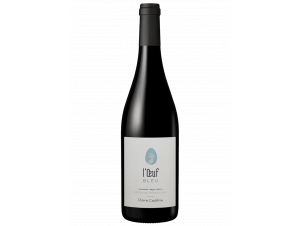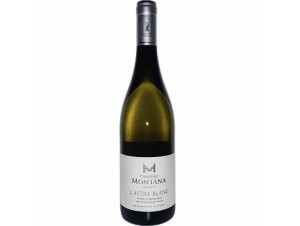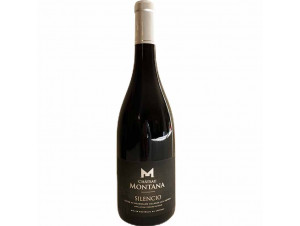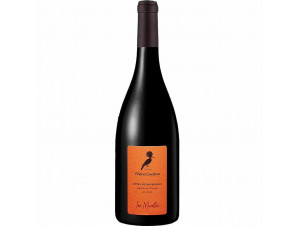You have no items in your shopping cart.
Wine Côtes-du-Roussillon
-
Top Selling-15%
-
Top Selling
-
Top Selling-15%
- -25%
- -25%
- -16%
- -15%
- -18%
- -20%
- -20%
The Côtes-du-Roussillon vineyards date back to the Roman era
Like the whole region, Roussillon has known successive invasions, since prehistoric times and the arrival of the Romans in particular. As everywhere they passed, they planted vines which have always been maintained, despite the historical upheavals.
While the Côtes du Roussillon finally experienced a spectacular boom throughout the 19th century, the arrival of phylloxera destroyed the entire vineyard. This parasite from North America destroyed the vines by the roots and the vinegrowers had no alternative but to replant everything. They made judicious grafts, using American plants, experienced in the fight against phylloxera.
The Côtes-du-Roussillon terroir is beaten by the Tramontane
Located in the department of the Eastern Pyrenees, the Roussillon vineyard extends the Languedoc vineyard from the pond of Leucate to the Spanish border. The terroir is bordered to the west by the Canigou massif, to the east by the Mediterranean Sea, to the north by the Corbières massif and to the south by the Albères massif.
The relief could not be more varied, between the mountainous foothills which border the hills, and the limestone bars which dominate the terraces and the alluvial plains. Fortunately, three rivers irrigate this arid landscape, shaped by the hot and dry climate of southern France. The Agly, La Têt and the Tech, as well as the river Le Rear, make up a hydrographic network that pleases the vine and the Mediterranean vegetation. Between the heat of summer and the heavy rainfall of autumn and spring in the form of thunderstorms, the countryside is battered one day in three by the Tramontane, a dry north-west wind.
The territory is divided into five regions: the Agly valley, the Roussillon plain, the Aspres, the Corbières du Roussillon and the foothills of the Albères. The latter is the most characteristic with its low walls of brown schist stone that hold back the erosion that is eating away at the rugged mountainous terrain.
It is on this chalky schist soil and sandy-clay molasses of the plains, or on the stony terraces that run along the valleys that the vines of the Côtes du Roussillon grow.
The Côtes-du-Roussillon have grape varieties for every colour
To satisfy the Côtes du Roussillon AOC, wines must imperatively come from a blend of at least three of the following grape varieties: carignan, grenache noir, syrah, cinsault and mourvèdre. Carignan is the most widely used grape in Roussillon, and is advantageously accompanied by Cinsault, Grenache and Mourvèdre. The local grape, Lladoner Pelut, completes the composition.
Côtes-du-Roussillon reds
The red Côtes du Roussillon are fleshy, fruity and spicy wines. They account for 70% of production and are found under three appellations: the Côtes du Roussillon, the Côtes du Roussillon Villages and the Côtes du Roussillon Les Aspres.Among the latest millesimes of red wine from the Côtes du Roussillon, the 2006 vintage stands out and delights lovers of game birds, but also hares and wild boars. Served between 14 and 17°, the wine also goes wonderfully well with saddle of lamb Catalan style
The colour of the wines is an intense garnet that is brightened by tile-like reflections as they age. Their dress is sustained and their aromas conceal morello cherry and blackberry, thanks to the Grenache. With age, the aromas of candied fruit, prunes, and even leather come to the fore.
Particularly powerful on the palate, they show generosity and structure. Their delicate tannins provide a pleasant creaminess.
Côtes-du-Roussillon whites
There is only 2% left for white wine production, but that is enough to make them stand out, with their citrus and white-fleshed fruit aromas and floral scents. The 2001 vintage is particularly prized by lovers of white Côtes du Roussillon. Fine and delicate, the whites are made from a range of grape varieties including Macabeu, Iladoner, Grenache blanc, Malvoisie, Marsanne, Roussanne and Vermentino blanc.Their colour is pale gold with green highlights. The palette of their aromas also includes the scents of the woods and vine flowers. Served at 10°, their lightness and freshness will delight fish and seafood lovers.
Côtes-du-Roussillon rosés
Côtes du Roussillon rosé wines deliver fresh red berry aromas and floral scents. They represent 28% of the appellation's production. The rosés, made from Carignan, Grenache and Syrah grapes, are best drunk young and fresh. Their pale pink colour lights up in the sunlight.The rather full-bodied mouthfeel suggests serving them with your Catalan-style chicken, your charcuterie dish, but also your summer salads. The 2004 vintage is said by connoisseurs to be the best. The rosés have a full-bodied mouthfeel that encourages serving them with charcuterie, salads and chicken à la catalane.
The domains to discover in Côtes-du-Roussillon
The Aubert et Mathieu estate
Domaine Aubert et Mathieu offers a strong commitment to local diversity and quality wines. The wines are 100% organic and are produced according to the rules of the art, and their aromas are enhanced. Grown on cool, high-altitude terroirs, the grapes are hand-picked, early in the morning, to preserve freshness. Ecological to the core, the bottles are made of lightweight glass and their labels of organic cotton.Château de Rombeau
Operated for centuries by the Fabrègue family, Domaine de Rombeau respects traditions, with a constant concern for quality. The Côtes du Roussillon that are born from their 113 hectares of vines happily combine elegance and power.Coteaux-du-Languedoc Cabrières
Coteaux-du-Languedoc Grès-de-Montpellier
Coteaux-du-Languedoc La Méjanelle
Coteaux-du-Languedoc Montpeyroux
Coteaux-du-Languedoc Saint-Drézéry
Coteaux-du-Languedoc Terres de Sommières
Côtes-du-Roussillon Les Aspres
Côtes-du-Roussillon-Villages Caramany
Côtes-du-Roussillon-Villages Latour-de-France
Côtes-du-Roussillon-Villages Lesquerde
Vin de Pays de la Cité de Carcassonne
Vin de Pays de la Côte Vermeille
Vin de Pays de la Haute Vallée de l'Aude
Vin de Pays de la Vallée du Paradis
Vin de Pays de la Vicomté d'Aumelas
Vin de Pays de Saint-Guilhem le Désert
Vin de Pays des Collines de la Moure
Vin de Pays des Coteaux d'Ensérune
Vin de Pays des Coteaux de Peyriac
Vin de Pays des Coteaux du Pont du Gard
Vin de Pays des Coteaux du Salagou
Vin de Pays des Coteaux Flaviens
Vin de Pays des Côtes Catalanes
Vin de Pays des Côtes de Prouilhe
Vin de Pays des Côtes de Thongue
Vin de Pays des Côtes du Brian
Vin de Pays des Hauts de Badens
Vin de Pays des Pyrénées-Orientales




































 TWIL - Achat de Vin
TWIL - Achat de Vin


